Philodendrons are a vast and diverse genus of plants known for their lush foliage and relatively easy care requirements. They offer a wide range of leaf shapes, colors, and sizes, making them a versatile and popular choice for indoor gardeners.
Now, let’s dive into some common, intriguing, and rare varieties of this plant family. Who knows, maybe you’ll find your next apartment bud!
Table of Contents
1. Heartleaf Philodendron (Philodendron hederaceum)
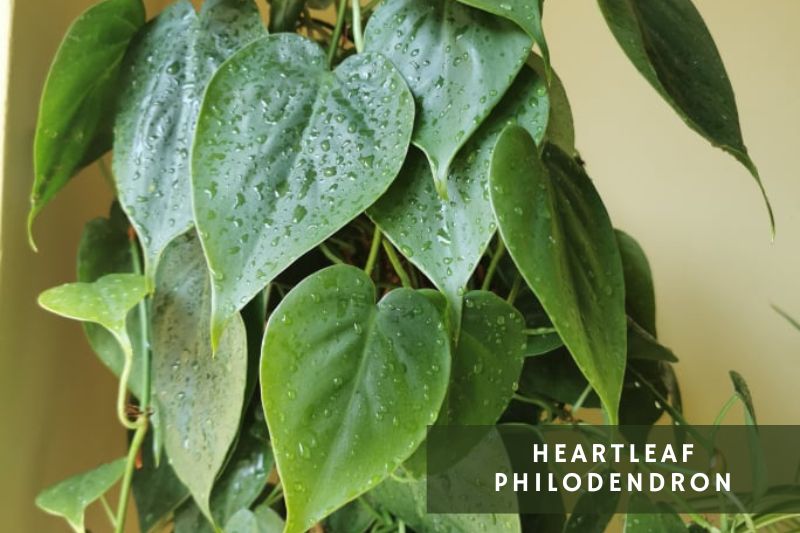
Heartleaf Philodendron is one of the most popular types in the Philodendron family. Its leaves are heart-shaped, a characteristic loved by many plant enthusiasts. It is a climbing variety, so providing it with a pole or trellis can encourage more vertical growth.
- Ease of Care: Easy; tolerant of a wide range of light and watering conditions. Need more care tips? Our Heartleaf Philodendron care guide has you covered.
- Leaf Pattern: Solid green, heart-shaped leaves
- Mature Size: Up to 4 feet in height with a similar spread
- Rarity: Common
2. Philodendron Brasil (Philodendron hederaceum ‘Brasil’)
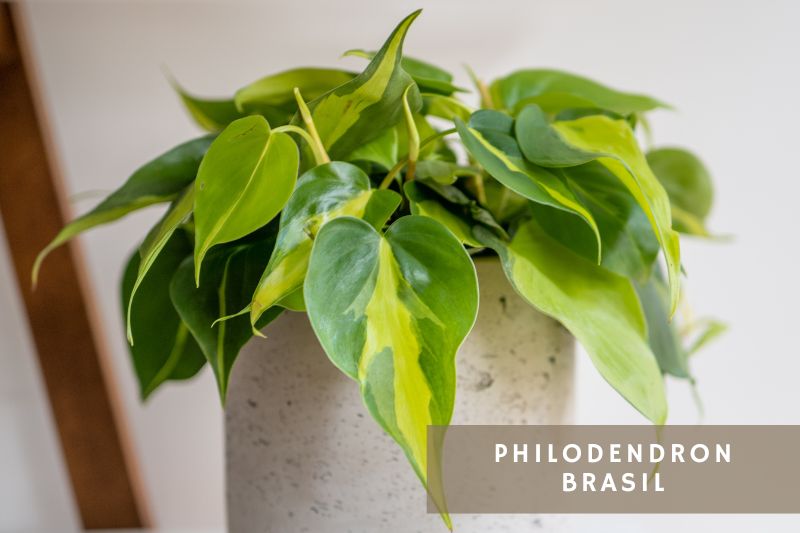
A variegated cousin of the Heartleaf, the Philodendron Brasil has lovely leaves with yellow and green patterns. It is just as forgiving and easy to care for as its green counterpart.
- Ease of Care: Easy; similar care to Heartleaf
- Leaf Pattern: Variegated; green and yellow
- Mature Size: Up to 4 feet
- Rarity: Common
3. Silver Leaf Philodendron (Philodendron brandtianum)
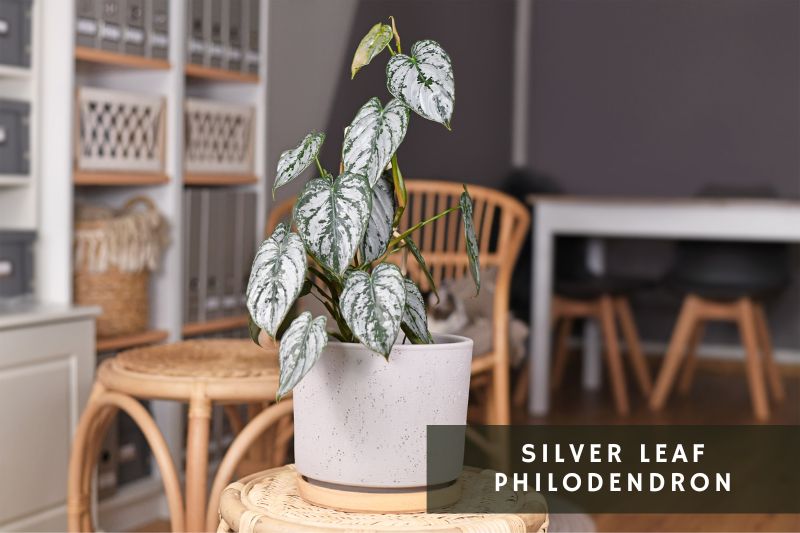
The Silver Leaf Philodendron adds an element of sparkle to your indoor garden with its silver-tinted leaves. They prefer moderate light and well-draining soil. Too much light can wash out the silver sheen on the leaves, making them appear more green.
- Ease of Care: Moderate; prefers well-draining soil and moderate light. For more tips, check out our Philodendron Brandi care guide.
- Leaf Pattern: Silver and green variegation
- Mature Size: Up to 3 feet
- Rarity: Fairly common
4. Velvet Leaf Philodendron (Philodendron micans)

Velvet Leaf is a vining philodendron variety with heart-shaped leaves that, as the name suggests, have a velvety texture. The leaves usually appear in a deep green hue and can even take on a reddish tone under certain light conditions.
- Ease of Care: Moderate; sensitive to over-watering. Check out our Philodendron Micans care guide for more info!
- Leaf Pattern: Solid, with a velvety texture
- Mature Size: Up to 4 feet
- Rarity: Somewhat rare
5. Philodendron ‘Prince Of Orange’
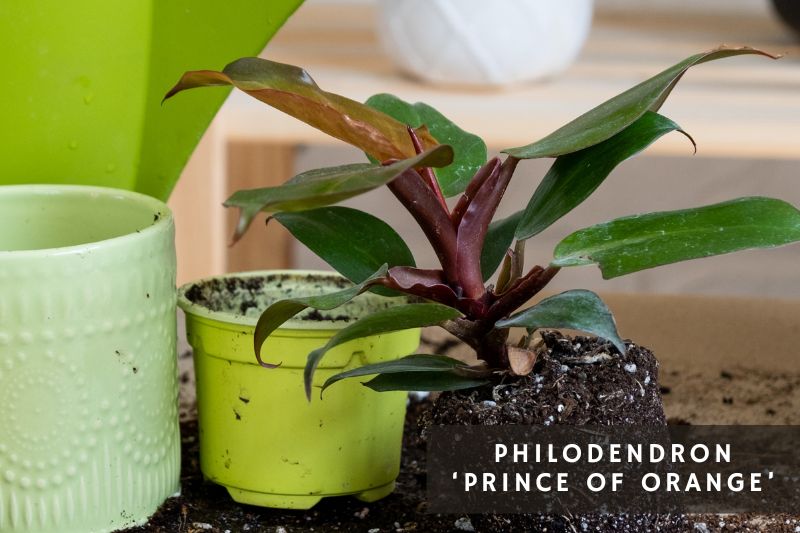
Philodendron ‘Prince of Orange’ gets its name from its uniquely hued leaves, which change from a beautiful orange to a deeper green as they mature. This self-heading Philodendron doesn’t vine, making it an excellent tabletop plant.
- Ease of Care: Moderate; prefers bright, indirect light and well-drained soil. For more info, check out our Prince of Orange care guide.
- Leaf Pattern: Solid color, changes from orange to green
- Mature Size: Up to 2 feet
- Rarity: Uncommon
6. Philodendron ‘Pink Princess’
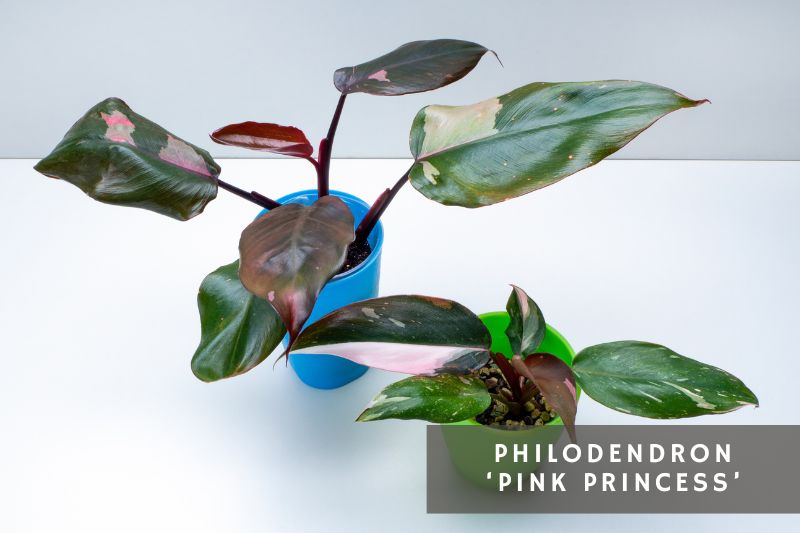
Known for its pink and green variegated leaves, the ‘Pink Princess’ is highly sought-after. Each leaf is unique; some may have full pink leaves, while others have a splash of pink.
- Ease of Care: Moderate; sensitive to over-watering
- Leaf Pattern: Variegated; pink and green
- Mature Size: 2 to 4 feet
- Rarity: Rare
7. Philodendron ‘White Princess’
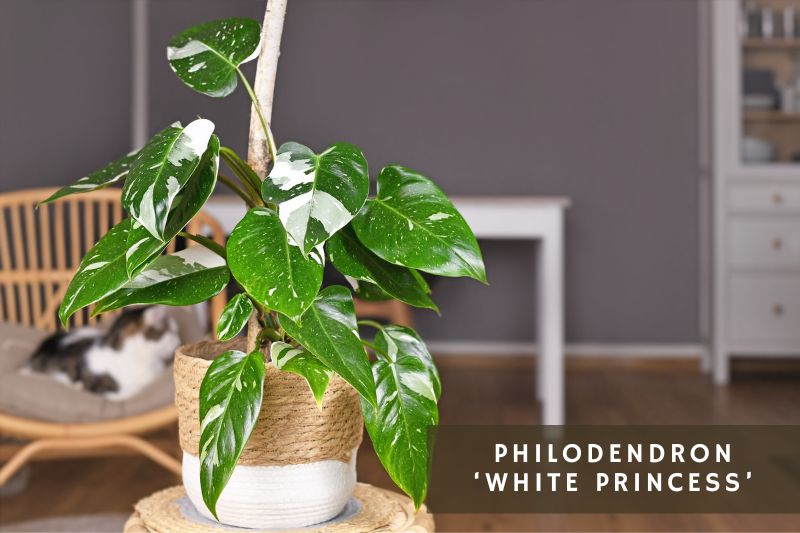
A counterpart to the ‘Pink Princess,’ the ‘White Princess’ has lovely white variegation on its leaves. The contrast between the white and green is quite impressive, making it a collector’s favorite.
- Ease of Care: Moderate; similar care to ‘Pink Princess’
- Leaf Pattern: Variegated; white and green
- Mature Size: 2 to 4 feet
- Rarity: Rare
8. Philodendron White Wave (Philodendron ‘Birkin’)
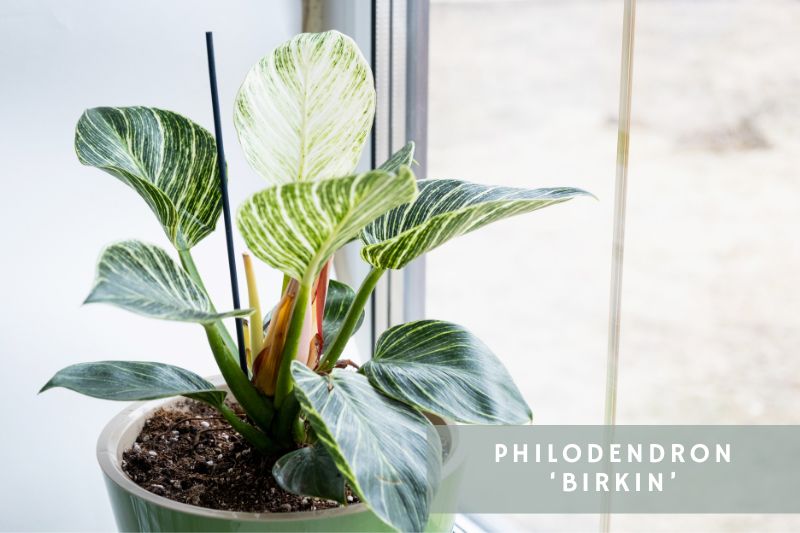
With its pinstripe pattern, the Philodendron ‘Birkin’ adds a unique aesthetic to any collection. The white stripes against a dark green backdrop are simply amazing.
And if you’re into patterns, make sure to check our articles on houseplants with striped leaves and also dotted or spotted foliage.
- Ease of Care: Moderate; prefers bright, indirect light. Check out our care guide for more info about Philodendron Birkin.
- Leaf Pattern: Striped; white on green
- Mature Size: Up to 3 feet
- Rarity: Uncommon
9. Silver Sword Philodendron (Philodendron hastatum)
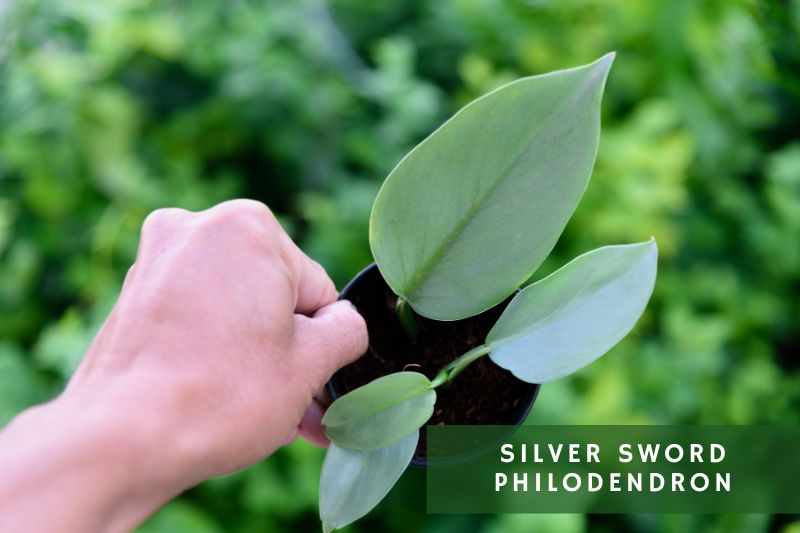
The Silver Sword has elongated leaves that offer a metallic sheen, giving it its sword-like appearance. This variety prefers a well-draining potting mix and moderate light.
- Ease of Care: Moderate. Check our out Silver Sword Philodendron care guide for more info!
- Leaf Pattern: Solid; metallic silver
- Mature Size: Up to 4 feet
- Rarity: Uncommon
10. Philodendron Melinonii
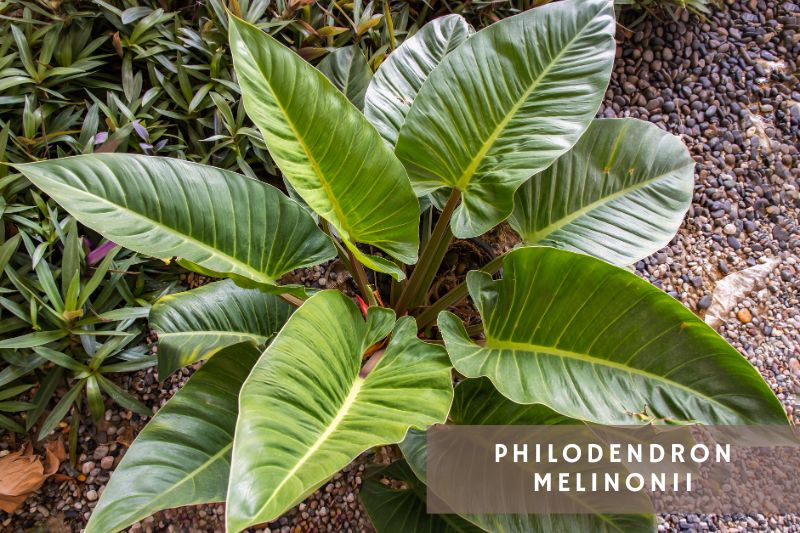
Philodendron Melinonii is recognized for its elongated, green leaves with ruffled edges. The leaves can get quite large, making it an eye-catching choice for indoor spaces.
- Ease of Care: Moderate; requires well-draining soil and partial sunlight. Check out our Philodendron Melinonii care guide for more info!
- Leaf Pattern: Solid; elongated leaves with ruffled edges
- Mature Size: Up to 4-5 feet
- Rarity: Rare
11. Billie and Philidor (Philodendron Billietiae)
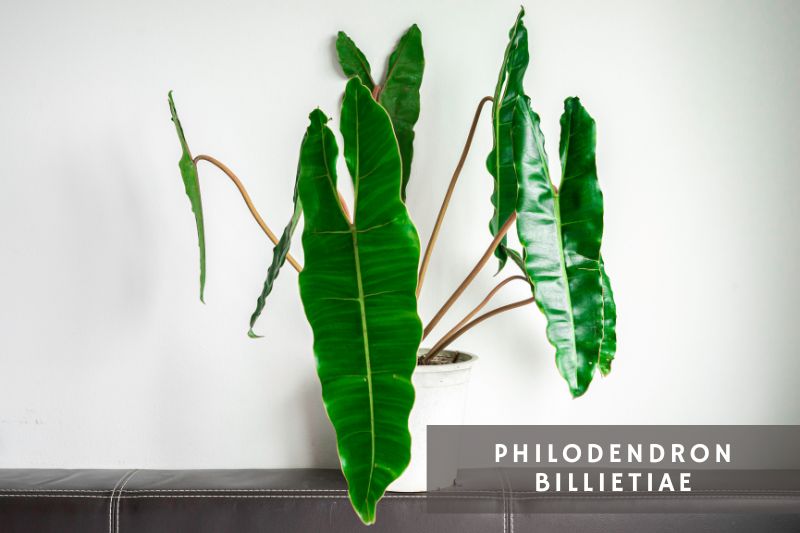
With its elongated, banana-shaped leaves and vibrant orange petioles, Philodendron Billietiae is a stunner. The leaves can also get quite long, making it a conversation starter in any plant collection.
And if you love this type of plants, make sure to give a read to our article about indoor plants with big, large leaves!
- Ease of Care: Moderate; needs bright, indirect light. Check out our Philodendron Billie care guide for more info.
- Leaf Pattern: Solid; elongated banana-shaped leaves
- Mature Size: Up to 5 feet
- Rarity: Uncommon
12. Moonlight Philodendron (Philodendron Hederaceum ‘Moonlight’)
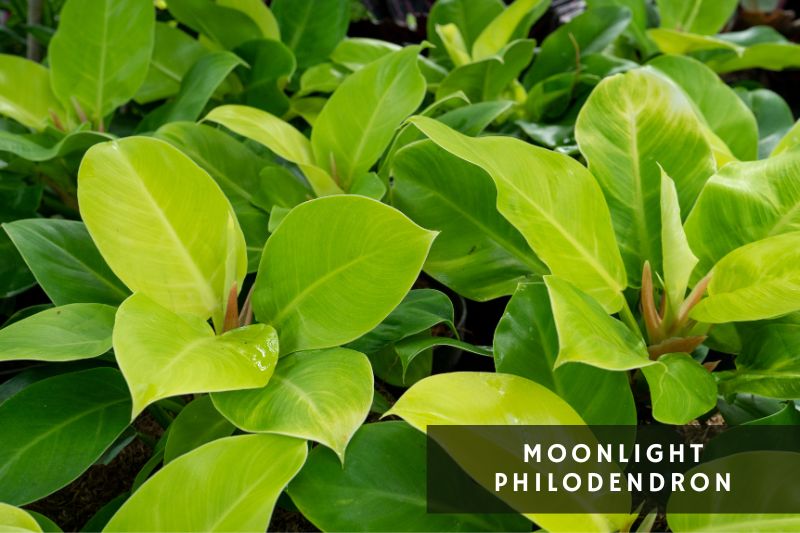
Philodendron ‘Moonlight’ offers bright lime-green leaves that can brighten up any space. It’s a hybrid variety that grows in a bushy form and can fit well in smaller spaces.
- Ease of Care: Easy; tolerant to various lighting conditions
- Leaf Pattern: Solid; bright lime-green
- Mature Size: Up to 3 feet
- Rarity: Common
13. Imperial Green (Philodendron erubescens ‘Imperial Green’)
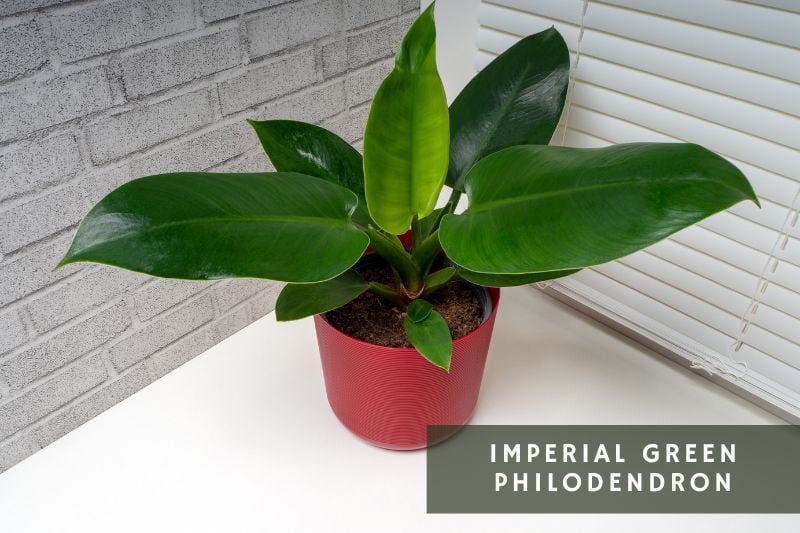
As the name suggests, this variety is known for its lush, deep green leaves. It’s a large plant that can act as a natural air purifier when placed indoors.
- Ease of Care: Easy; adaptable to different light conditions
- Leaf Pattern: Solid; deep green
- Mature Size: 4 to 5 feet
- Rarity: Common
14. Ecuador Philodendron (Philodendron verrucosum)
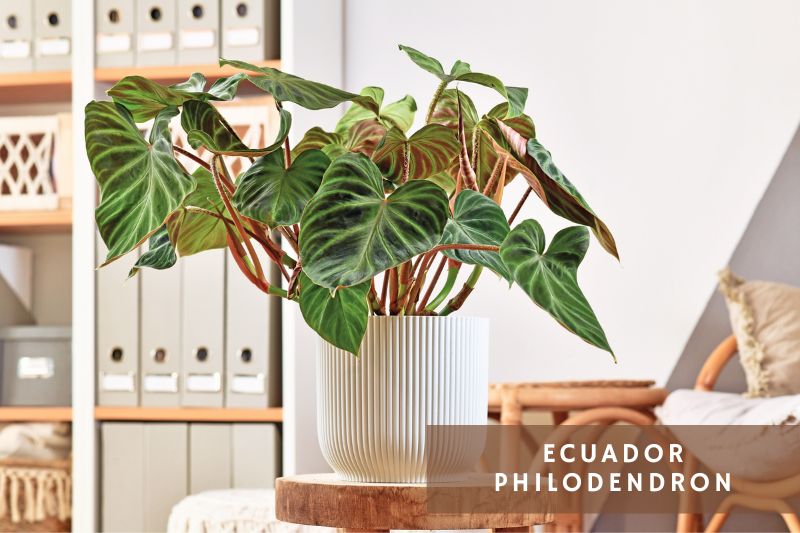
Native to Ecuador, this variety has dark green, velvety leaves with light-colored veins. It’s a unique variety that can bring a tropical vibe to any room.
- Ease of Care: Moderate; requires high humidity
- Leaf Pattern: Veined; dark green with light veins
- Mature Size: Up to 4 feet
- Rarity: Rare
15. Black Gold Philodendron (Philodendron melanochrysum)
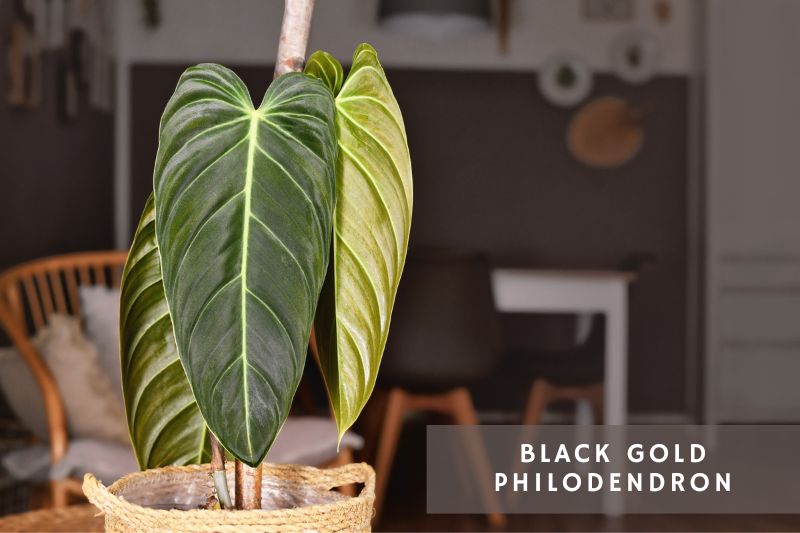
Black Gold Philodendron is admired for its deep, dark green leaves that have a glossy, almost metallic sheen. As the plant matures, the leaves become larger and develop a more pronounced gold coloration near the veins.
- Ease of Care: Moderate; prefers high humidity and bright, indirect light
- Leaf Pattern: Solid; deep green with gold near veins
- Mature Size: Up to 4 feet
- Rarity: Uncommon
16. Philodendron campii ‘Lynette’
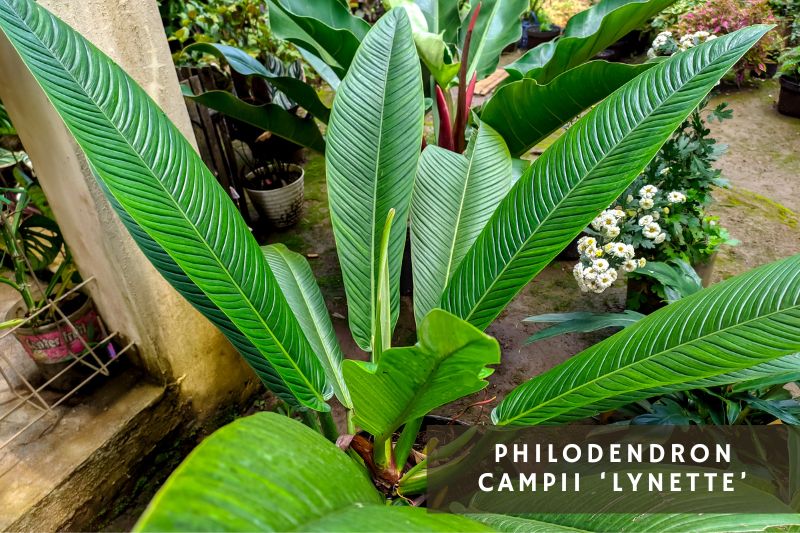
This particular Philodendron variety has serrated, arrow-shaped leaves and tends to be more compact. Its appearance can add a unique texture to your indoor garden.
- Ease of Care: Easy; adaptable to various light conditions
- Leaf Pattern: Solid; arrow-shaped with serrated edges
- Mature Size: Up to 2-3 feet
- Rarity: Uncommon
17. Variegated Burle Marx Philodendron (Philodendron ‘Burle Marx Variegata’)
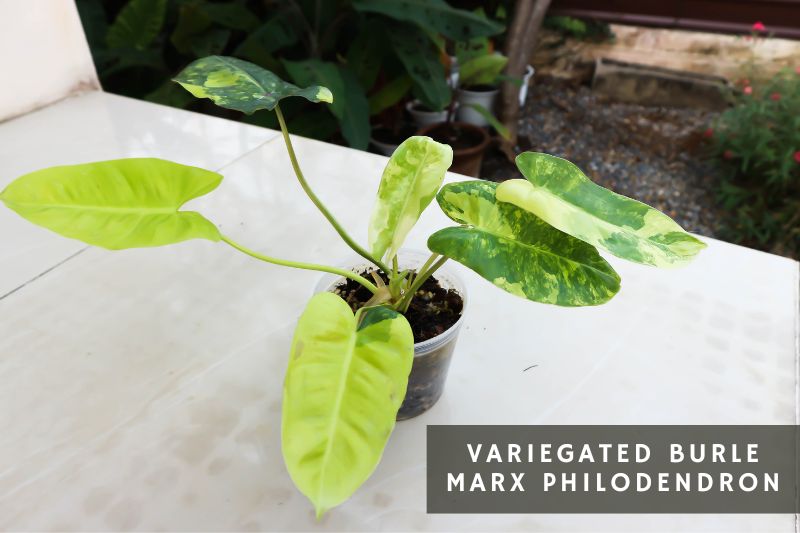
This variegated version of the classic Burle Marx adds a different aesthetic with its green and white leaves. It’s well-suited for hanging baskets or as a climbing plant.
- Ease of Care: Moderate; prefers bright, indirect light
- Leaf Pattern: Variegated; green and white
- Mature Size: Up to 3 feet
- Rarity: Rare
18. Horsehead Philodendron (Philodendron bipennifolium)
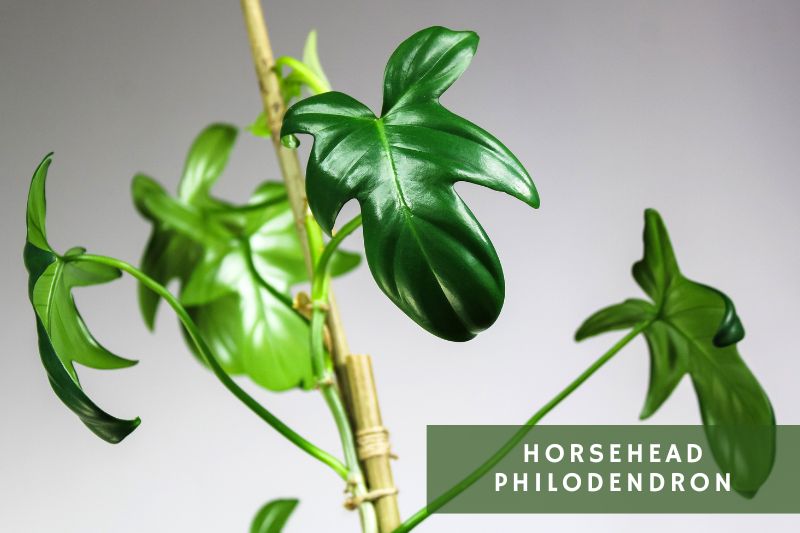
This interesting variety features uniquely shaped leaves that resemble a horse’s head, hence the name. It’s a vining Philodendron that loves to climb.
- Ease of Care: Moderate; enjoys well-draining soil
- Leaf Pattern: Solid; uniquely shaped leaves
- Mature Size: 3 to 4 feet
- Rarity: Uncommon
19. Marina Ruy Barbosa (Philodendron ‘Paraiso Verde’)
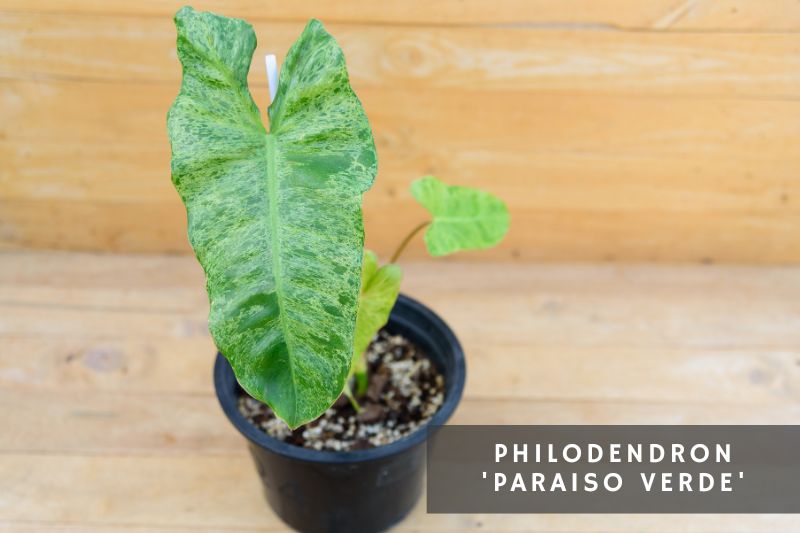
The ‘Paraiso Verde’ is known for its marbled, variegated leaves of green and lighter green. This Philodendron adds a splash of color and interest to any plant collection.
- Ease of Care: Moderate; bright, indirect light is preferred
- Leaf Pattern: Marbled variegation; green and lighter green
- Mature Size: Up to 3-4 feet
- Rarity: Uncommon
20. Philodendron Mamei
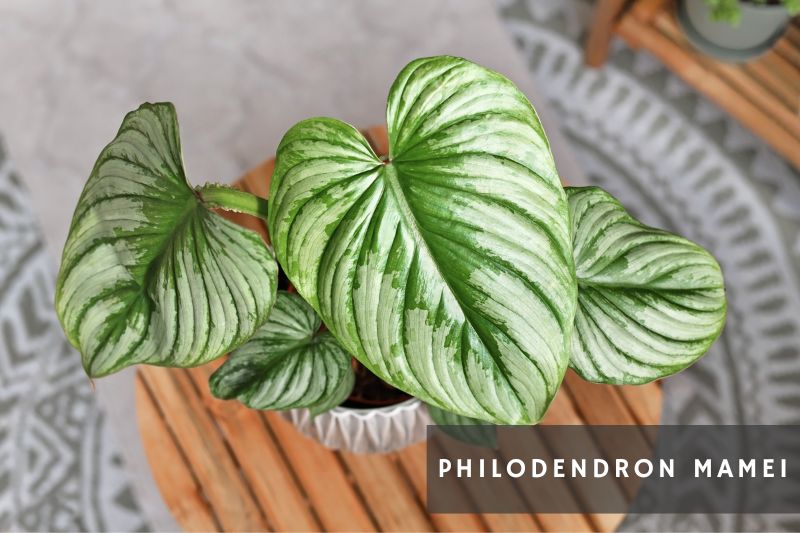
Philodendron Mamei comes with broad, silver-patterned leaves, making it a visually captivating addition to any collection. The silver markings can vary from leaf to leaf, adding uniqueness to each plant.
- Ease of Care: Moderate; enjoys higher humidity and well-draining soil
- Leaf Pattern: Variegated; green with silver markings
- Mature Size: Up to 4 feet
- Rarity: Rare
21. Pigskin Philodendron (Philodendron Rugosum)
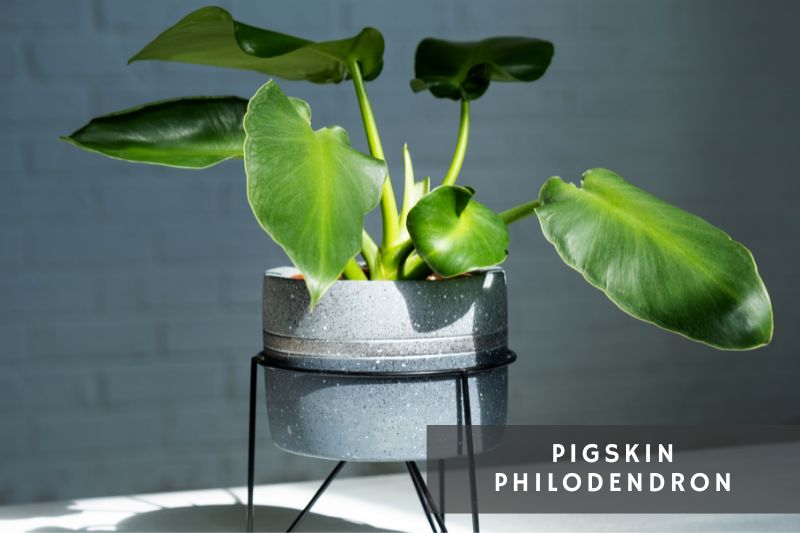
Also known as the “Pigskin Philodendron,” this variety features textured, rough leaves, giving it a unique tactile dimension that sets it apart from smoother varieties.
- Ease of Care: Moderate; prefers high humidity
- Leaf Pattern: Solid; textured, rough leaves
- Mature Size: 3 to 4 feet
- Rarity: Rare
22. Philodendron Mayoi
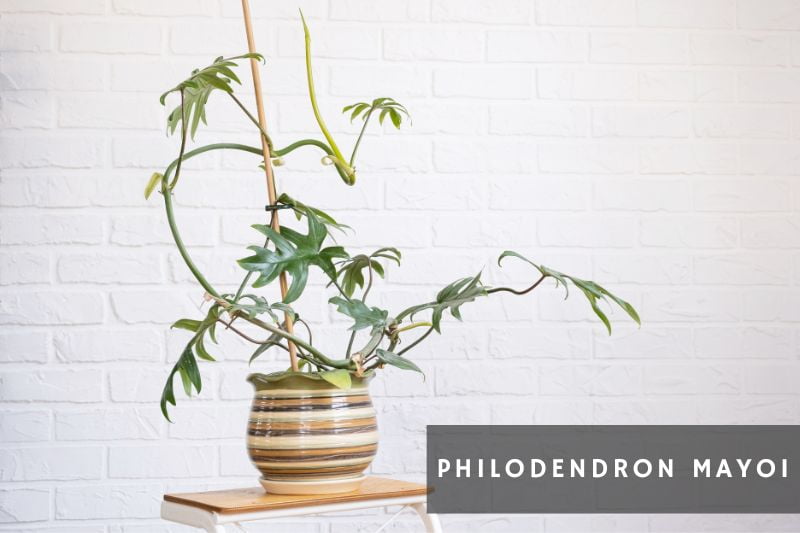
This rare Philodendron variety features long, serrated leaves and can grow quite tall when provided with a pole to climb. The leaves can vary in shape, adding a bit of surprise as the plant matures.
- Ease of Care: Moderate; prefers bright, indirect light and high humidity
- Leaf Pattern: Solid; long, serrated leaves
- Mature Size: Up to 5 feet
- Rarity: Very Rare
23. Philodendron Florida Ghost (Philodendron pedatum ‘Florida Ghost’)
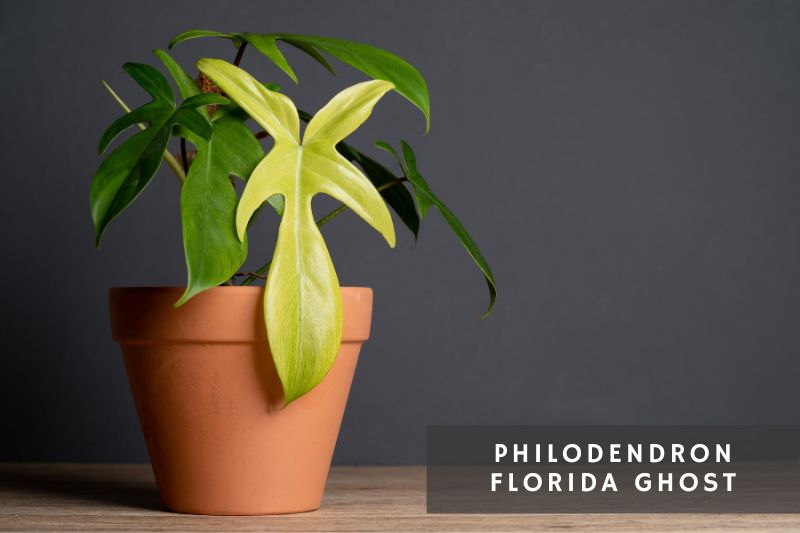
Named for its ghostly, pale-colored new leaves, which darken to green as they mature. This hybrid is a showstopper and often a must-have for collectors. It’s also quite rare and expensive.
- Ease of Care: Moderate; requires bright, indirect light and high humidity
- Leaf Pattern: Solid; pale new leaves darken with age
- Mature Size: Up to 4 feet
- Rarity: Rare
24. Philodendron Lemon Lime (Philodendron hederaceum ‘Lemon Lime’)
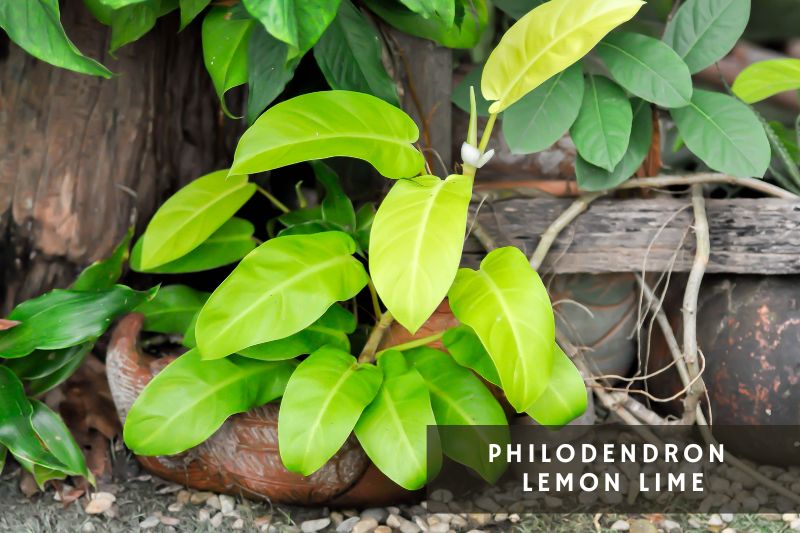
The Lemon Lime Philodendron stands out with its neon-yellowish-green foliage. This plant can bring a vibrant pop of color to any space and is also great for beginners due to its hardiness.
- Ease of Care: Easy; adaptable to various lighting conditions
- Leaf Pattern: Solid; bright yellowish-green leaves
- Mature Size: Up to 3 feet
- Rarity: Common
25. Philodendron ‘Ring of Fire’
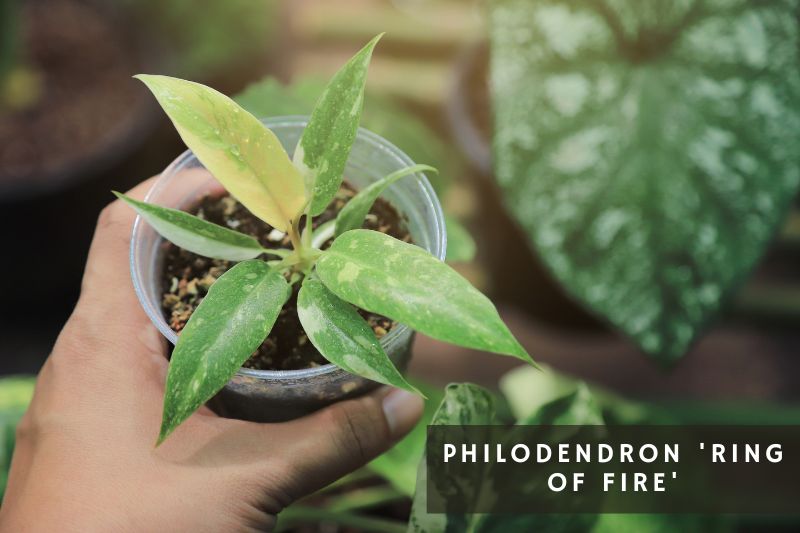
As dramatic as its name suggests, this variety features leaves with a gradient of color, going from green to yellow to a fiery red. It’s definitely a statement plant that draws attention.
- Ease of Care: Moderate; prefers bright, indirect light
- Leaf Pattern: Variegated; green to yellow to red gradient
- Mature Size: Up to 4 feet
- Rarity: Rare
26. Red Bristle Philodendron (Philodendron Squamiferum)
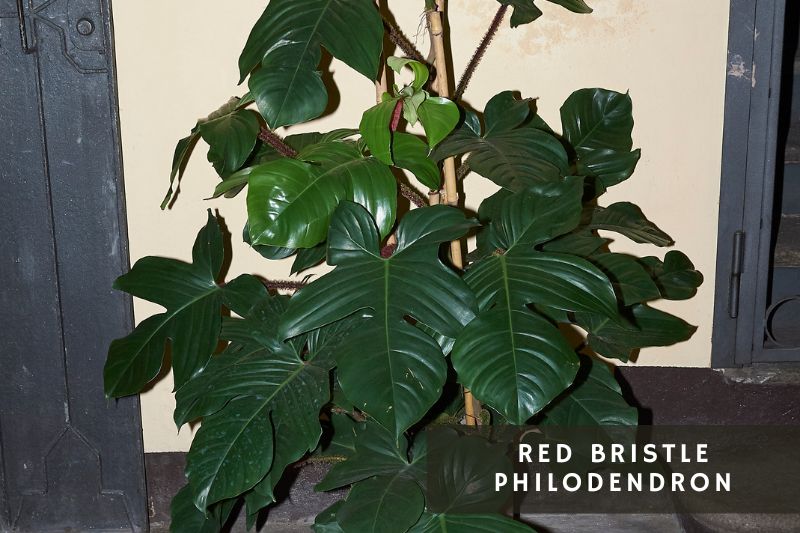
This unique Philodendron has hairy petioles, which are quite unusual in the plant world. The leaves are lobed and the plant can grow as a climber or left to trail.
- Ease of Care: Moderate; prefers high humidity
- Leaf Pattern: Solid; lobed leaves
- Mature Size: Up to 4 feet
- Rarity: Uncommon
27. Fernleaf Philodendron (Philodendron Bipinnatifidum ‘Tortum’)
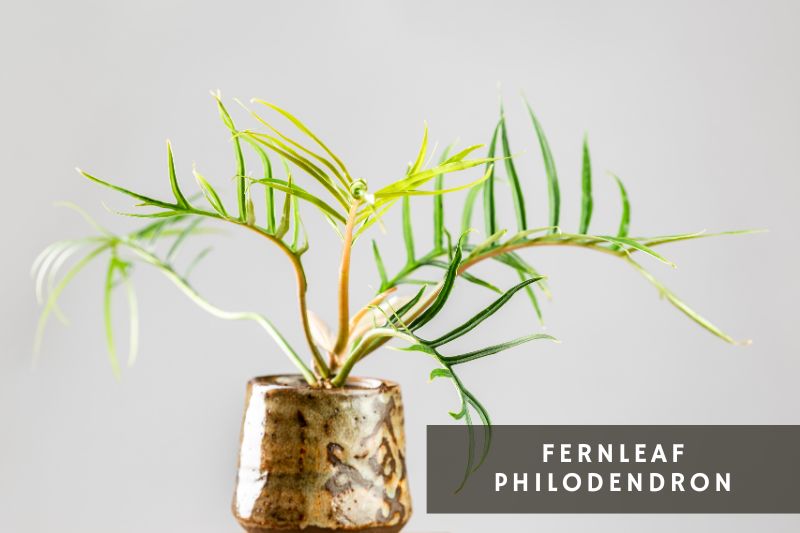
The Tortum variety has a unique, spiral leaf pattern that makes it stand out. The leaves look almost like they are dancing, providing dynamic visual interest.
- Ease of Care: Moderate; requires bright, indirect light and well-draining soil
- Leaf Pattern: Solid; spiral-shaped leaves
- Mature Size: Up to 5 feet
- Rarity: Very Rare
Conclusion
The world of Philodendrons is as varied as it is captivating, offering something for everyone, from the novice indoor gardener to the most seasoned plant parent.
Whether you’re looking for striking leaf patterns, vibrant color variations, or a plant that’s forgiving of a busy lifestyle, there’s likely a Philodendron that fits your needs.

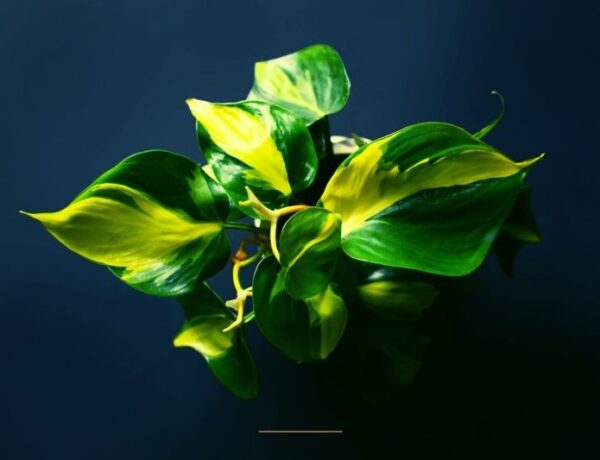
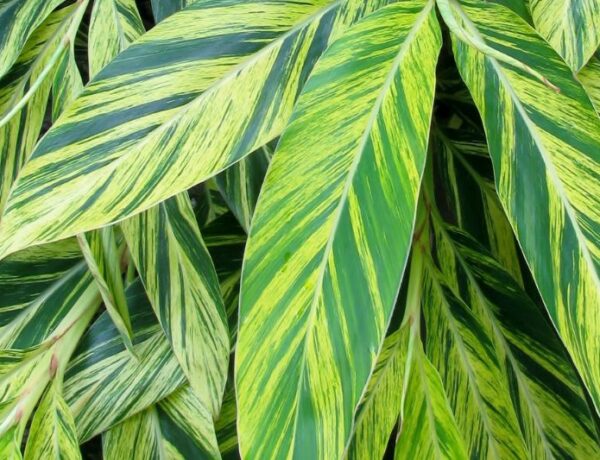
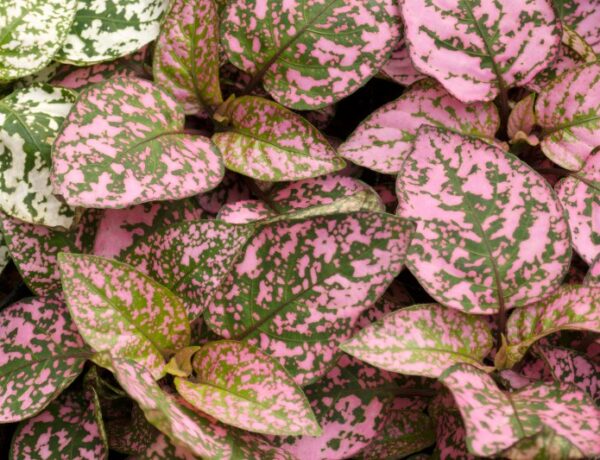

No Comments